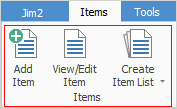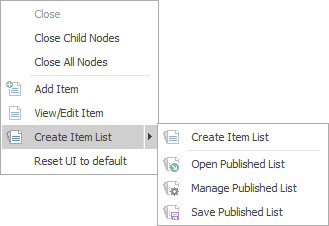

This section explains the function of Items within your work process, and the interaction of other Jim2 objects in managing the information maintained within an Item. The Item in a job interacts with the stock and can be assigned as the responsibility of single or multiple user(s).
An Item is used as a means of automating various functions within the system, including tracking and reporting. An Item can be set up with related stock, so that the user is prompted with the related stock to add to a job.
The Item describes what is to be serviced in a service job, what is to be manufactured in a manufacturing job, and describes what sort of sales job is to be executed.
An Item represents the prime objective of a job. One job is added for each Item entering your workflow. A list of Items your company uses will show your areas of competence – you should be capable of selling, servicing or manufacturing each Item.
 |
Be careful not to confuse stock with Items.
If you can identify an Item as applicable to both sales and service jobs, you should add that Item as a Sales Item as well as a Service Item. |
Let's use a computer sales and service company as a working example of Items.
This company has various sales methods (Items), including door-to-door, by telephone, over the counter and via the web. They also manufacture computers from multiple parts, and their service division services computers, hard disk drives and monitors. Therefore, their workflow involves selling a computer, manufacturing a computer and servicing a computer.
Therefore, how they make that sale is a Sales Item, what they manufactured parts into is a Manufacturing Item, and what they serviced is a Service Item.
If the company wanted to track how they sell stock, they would create an Item code for each sale method, eg. Sale.Door would represent all door-to-door sales jobs.
As for servicing, they may want to have different procedures for servicing a range of computers. In this case they would create an Item code for each computer in the range, eg. SYS.IBM would represent an IBM computer.
 |
It's important to choose Item codes carefully. Consideration needs to be given to what sort of Items pass through your workflow, and how to differentiate between them in a meaningful way.
Remember, Items represent the prime objective of a job. |
Right Click Options in the Nav Tree

After the top 3 (which are self explanatory), these options mirror what is in the ribbon in the Items tab, except for the last tab, which will reset all tabs to default.
Further information: